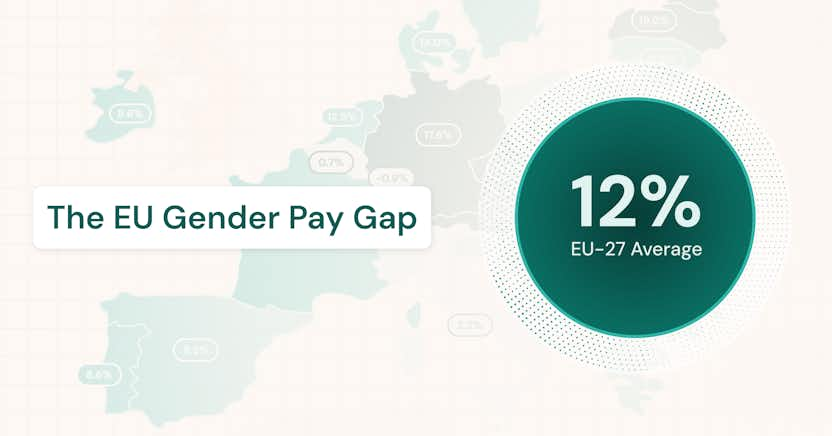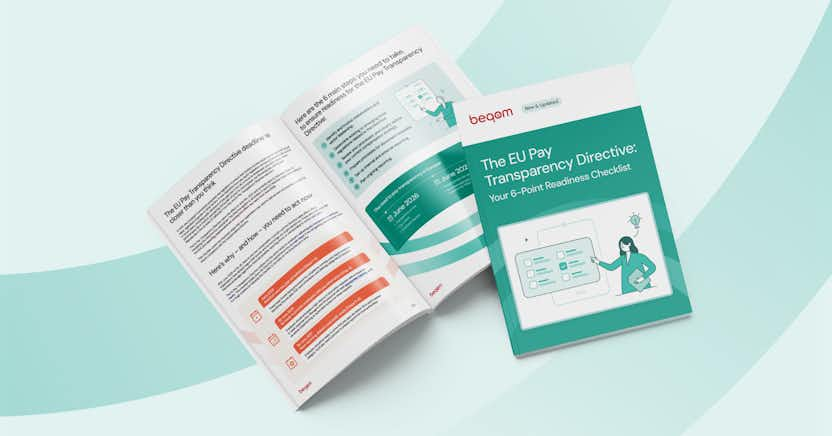From Data to Insights: 5 Steps to Pay Equity and Transparency Success

Learn more about the following beqom products
Compliance timelines for pay equity and transparency laws are fast approaching, but for many organizations, the biggest hurdle isn’t the analysis itself — it’s the data. Whether it’s spreadsheets that don’t match or IDs that don’t line up, any mismatch or inconsistency can make equity gaps look bigger — or smaller — than they really are.
The solution is straightforward: preparation. Organizations that take the time to prepare their data set themselves up to get the most out of beqom’s analyses, making the process faster, the outputs more accurate, and the insights easier to act on. In other words, the time you spend upfront pays dividends later.
To collect the essential data points, follow the five steps below to lay the foundation for any pay equity and transparency analysis. Together, they ensure that your analysis will deliver a clear and trusted view of pay across your organization.
Step 1: Gather core employee identifiers
When an employee in Berlin works for a company headquartered in New York on a project managed from Singapore, which pay transparency laws apply?
The answer depends on multiple factors that often conflict with each other. Under EU rules (such as Rome I and Brussels I), employment law typically applies to where the work is performed, not where the company is based. In contrast, some US state laws tie obligations to the employer’s presence in the state, meaning remote roles can still trigger compliance even if the employee is elsewhere. Meanwhile, countries like the UK, Canada, and New Zealand are preparing to implement their own versions of pay transparency rules, each with its own requirements.
This creates scenarios where a single role can trigger transparency requirements in multiple jurisdictions simultaneously, leaving the company responsible for meeting different disclosure timing, scope of required information, and enforcement mechanisms.
Adding to the complexity is when employees move to a different state or country without changing roles, which, in hybrid or remote-first companies, happens far more than traditional employment frameworks anticipated. A relocation may trigger new disclosure obligations for the employer, even if the employee’s contract and pay remain unchanged. Traditional employment frameworks weren’t designed to anticipate this kind of overlapping compliance.
Step 2: Organize employee grouping data
Well-defined groupings provide the context needed to spot patterns in pay equity and to make transparency disclosures meaningful. Without them, it’s nearly impossible to compare like-for-like roles or to ensure compliance with regions that require segmentation by job type or geography.
Once your foundation is in place, capture how your workforce is structured. This includes:
- Country: Where the employee is based, which determines applicable laws and market benchmarks.
- Business function: Broad department or function, for example, Finance, Sales, or IT.Job family/role type: Grouping of related roles, such as Software Engineering or Customer Support.
- Worker category: Whether the worker is a full- or part-time employee or contractor.
Pro tip: Payroll, HR, and even line managers may all own pieces of the puzzle, and identifying who’s responsible for each dataset can help you avoid gaps and conflicting versions. It’s especially helpful to establish a single data champion for the project — someone who can coordinate inputs, resolve conflicts, and answer questions quickly. Without clear ownership, it’s easy for different teams to upload overlapping or contradictory data, slowing down the process.
Step 3: Consolidate compensation data
The next step is collecting the numbers themselves. Compensation data is the core of both equity and transparency analysis, and it’s where small inconsistencies can have an outsized impact.
Missing bonus data, for instance, can make employees appear underpaid relative to peers, while policy differences between allowances may skew results if they aren’t clearly documented.
Compensation data typically covers:
- Base salary: Fixed annual or hourly pay.
- Variable pay: Bonuses, commissions, or incentives tied to performance.
- Allowances: Location- or role-specific extras, like housing, car, or meal stipends.
Pro tip: Catching minor inconsistencies upfront, like date formats or job title variations, prevents bigger reconciliation issues later. Variations like Engineer II versus Software Developer can mask pay patterns unless mapped to the same grouping. Even something as simple as aligning currencies across geographies makes analysis far more reliable.
Step 4: Map compensation drivers
Beyond raw pay figures, organizations need to capture the factors that legitimately influence compensation. Without these inputs, it’s challenging to separate justified pay differences from inequities.
For example, two employees in the same role may earn different salaries because one has 10 years more experience or consistently high performance reviews. Capturing those drivers ensures that the analysis can distinguish between structural bias and valid differentiation.
Some common ones include:
- Tenure: How long someone has been with the company.
- Grade or level: Position in the organizational hierarchy, for example, Analyst versus Senior Analyst.
- Skills or certifications: Specialized expertise that commands a premium.
- Performance ratings: How an employee has been evaluated historically.
Pro tip: Pay practices often vary by region or business unit, and these nuances matter. For instance, a housing stipend in Singapore and a car allowance in Germany may both serve as cost-of-living adjustments. Labeling them as such helps to group them correctly, rather than treating them as unrelated extras during the analysis. Similarly, add a note if retention bonuses or shift differentials apply only to certain teams, so those policies are clear in context.
Step 5: Layer on transparency-specific data
For organizations preparing not just for equity analysis but also for pay transparency, additional layers of information are needed. This includes:
- Employment details: Contract length (permanent, fixed-term, temporary), hours worked (full-time versus part-time FTE), and employment status (active, on leave, seasonal).
- Organizational hierarchy: Reporting lines, manager/employee relationships, team structures.
These fields add essential context for transparency disclosures. For example, a salary range may be different if it applies to a temporary contractor versus a permanent employee. Clear hierarchies also make disclosures more meaningful by showing how roles fit together and who makes pay decisions within the organization.
Pro tip: Even if you’re only focused on a pay equity analysis right now, consider collecting transparency-specific fields (like contract length, hours worked, or reporting lines) now. Building this into your preparation means you’ll be ready when disclosure requirements expand to your state or city, or when employees start asking for more visibility.
Preparing your data pays off
Every organization is different, and the exact data you’ll bring to your first analysis will depend on your pay philosophy, regional policies, and system setup. It’s normal to feel like there are gaps or inconsistencies, and that’s exactly what beqom is built to solve.
Don’t let data delays hold up your compliance goals. If you’re ready to turn raw information into trusted, actionable insights, talk to a beqom expert today — and accelerate your journey to pay equity and transparency success.







